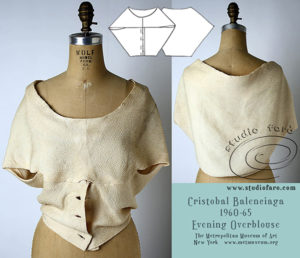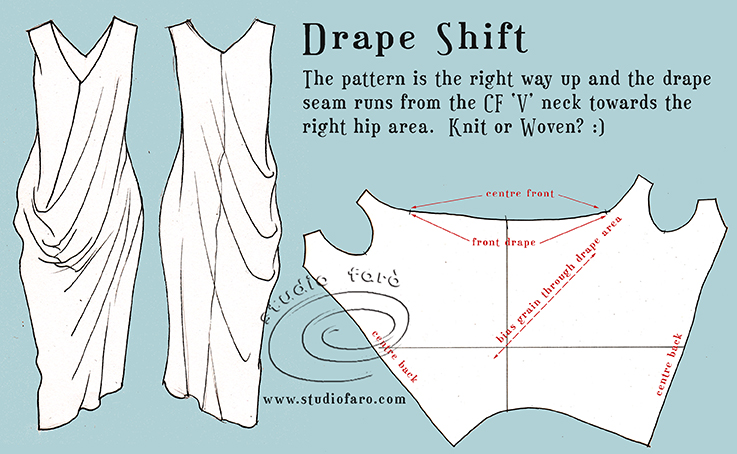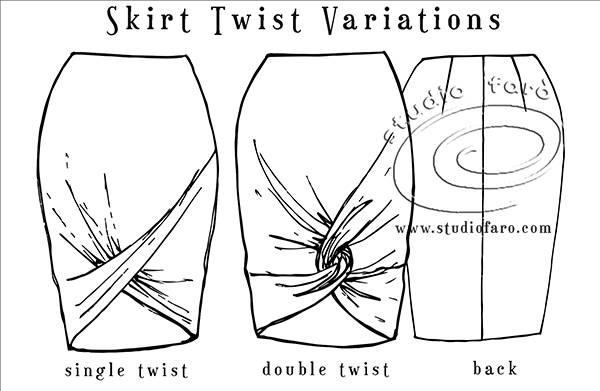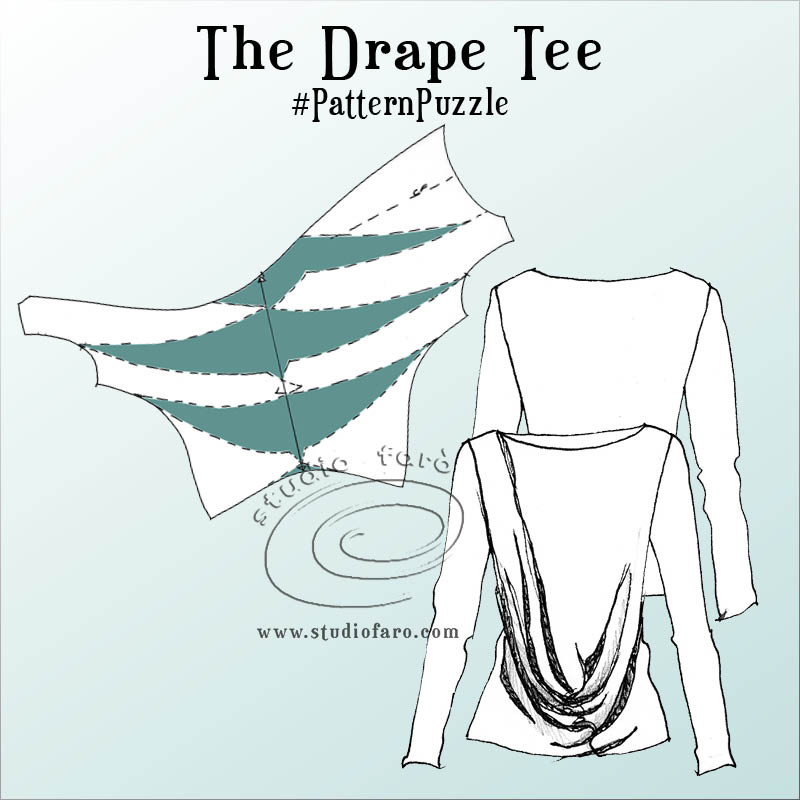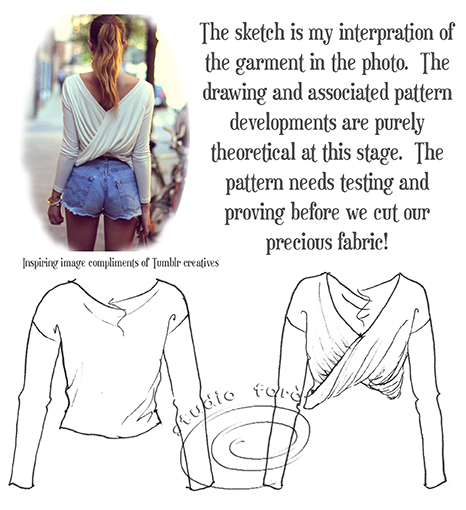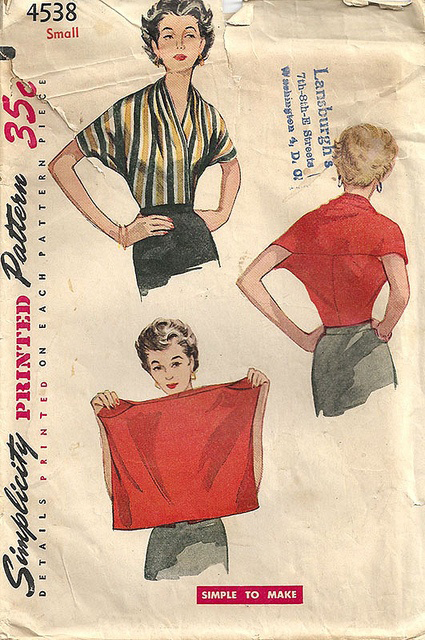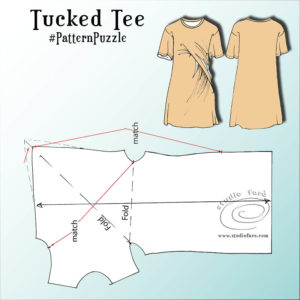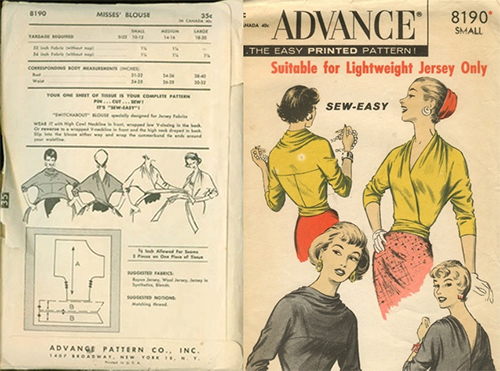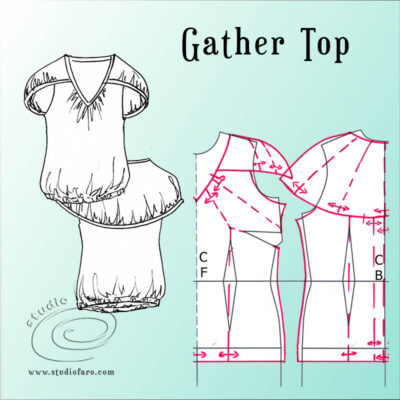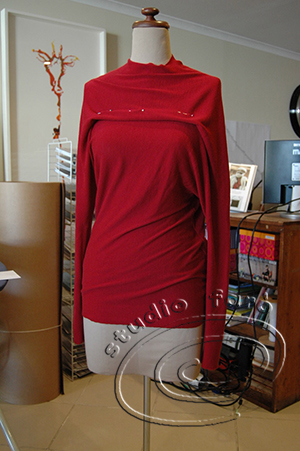30 Dec Balenciaga Evening Overblouse
From the first moment I clapped my eyes on this little beauty, I've been deeply in love. Never far from my mind, I had made several attempts to understand this self-drafted style. Finally, I have something to start with.
My first ideas were based on a flat, geometric sketch as featured in the image below. I could see how a slightly smaller hem circumference would catch on the high hip and create those beautiful drapes.
